
 |
Our office is located on Main Street in Lakemont Park at 166 Lakemont Park Boulevard in Altoona, Pa 16602 Directions/Map
Patient Information
- Choosing a Periodontist
- Scheduling
- Your Initial Visit
- Financial Arrangements
- Dental Insurance
- Patient Safety
Treatment Options
- Disease Diagnosis
- Nonsurgical Periodontics
- Surgical Periodontics
- Dental Implants
- Bone Grafting
- Gum Tissue Grafting
- Crown Lenthening
- Cosmetic Procedures
- New Technologies
- Oral Pathology
- Long Term Success
Office Address
Michael L. Cohen, D.D.S.
166 Lakemont Park Blvd.
Altoona, PA 16602
814-949-2622
What Are Dental Implants?
Since the early 1980’s root form dental implants have been a growing part of dental practice and are now a routine office procedure to replace missing teeth. Dental implants can be used to replace front and back teeth as well as anchoring loose or difficult to fit dentures. Implants can replace single teeth and areas with multiple tooth loss.
Advantages of Dental Implants
Implants are a better choice to replace missing teeth versus removable partial dentures or cemented bridges for the following reasons:
- Implant restorations stand alone and do not require grinding on healthy teeth.
- Implant restorations are rigidly anchored in the mouth like natural teeth.
- Implants can replace back teeth in areas where all teeth have been lost.
- Implants can be used to anchor unstable dentures in jaws with severe bone loss.
Procedure
This procedure has an intial implant placement phase followed by a restorative phase.
Implant placement is done under local anesthesia and there is no feeling or discomfort while the implant(s) are placed. Implants are placed into prepared areas within the jaw bone. After approximately three to four months to allow for integration, the patient returns to their restorative dentist for their implant restoration.
Occasionally implants are submerged below the gum upon placement and need to be uncovered after the three to four month healing period and before crown fabrication.
During the course of implant treatment patients can wear temporary restorations and in most cases patients never need to be without teeth.
Benefits and Limitations
Implants are excellent long term anchors for dental restorations and research has found successful integration of implants with a patient’s bone to be approximately 95%. For some reason some implants fail to integrate and must be removed.
Despite excellent long term results there are some limitations to implant therapy. There needs to adequate thickness, depth and density of bone for implant placement. Many times after tooth loss the jaw bone will atrophy and bone resorption will be inadequate for implant placement. In addition, there are anatomic structures such as the sinus in the upper jaw and nerve tissue in the lower jaw that make implant placement difficult or not possible. However, bone can often be regenerated and sinuses can be elevated to allow implant placement. Each situation needs to be individually evaluated for treatment.
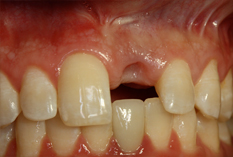 |
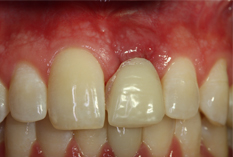 |
|
| Missing Tooth | Temporary Removable Tooth |
 |
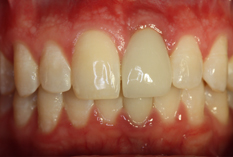 |
|
| Implant Placement | Implant Restoration |
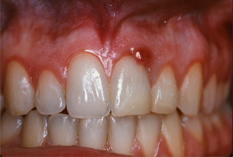 |
 |
|
| Infected Tooth | Missing Tooth |
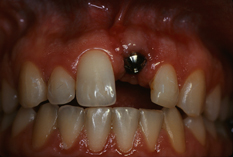 |
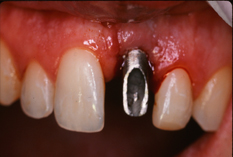 |
|
| Implant Placement | Implant Abutment |
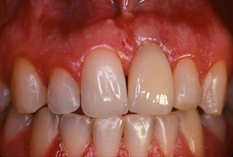 |
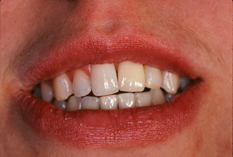 |
|
| Implant Crown | Smile with Implant Crown |
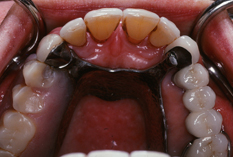 |
 |
|
| Missing Teeth & Partial Denture | Temporary Restoration |
 |
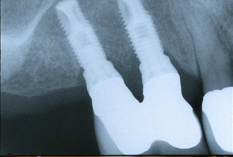 |
|
| Implant Crowns | Xray Implant Crowns |
 |
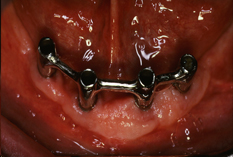 |
|
| Implants | Implant Retention Bar |
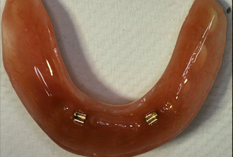 |
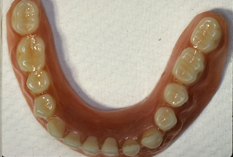 |
|
| Implant Overdenture Clips | Implant Overdenture |
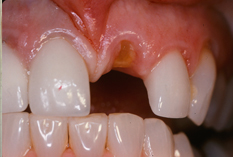 |
 |
|
| Fractured Tooth | Tooth Removed |
 |
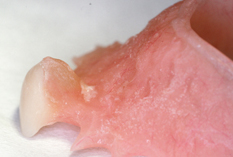 |
|
| Temporary Removable Tooth | Temporary Removable Tooth |
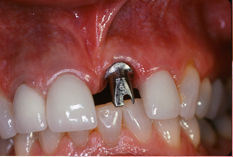 |
 |
|
| Implant Abutment | Implant Crown |